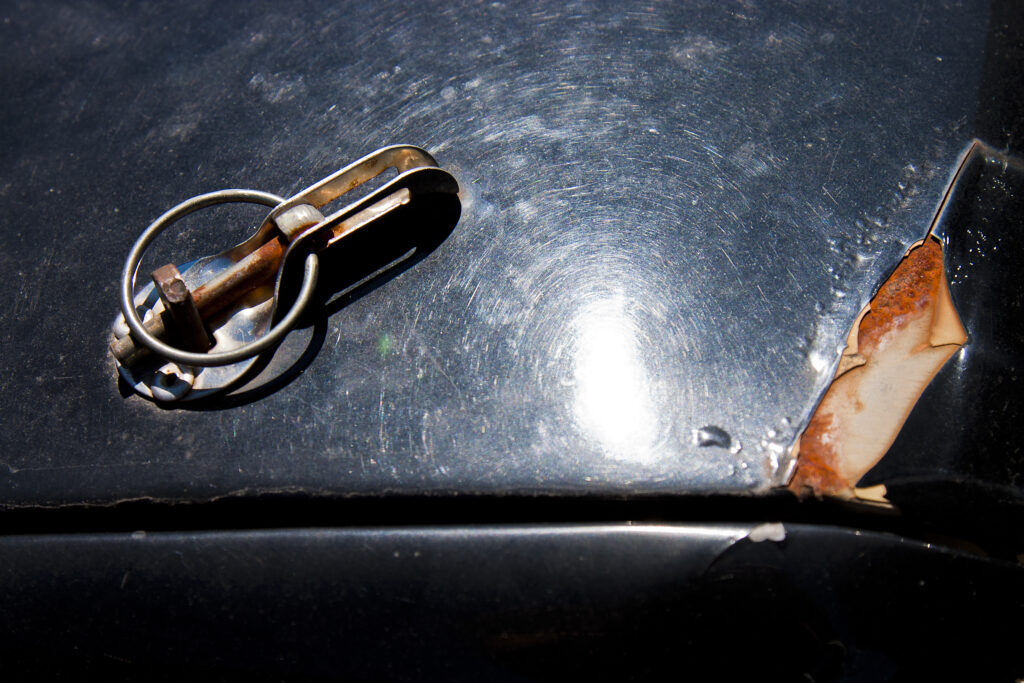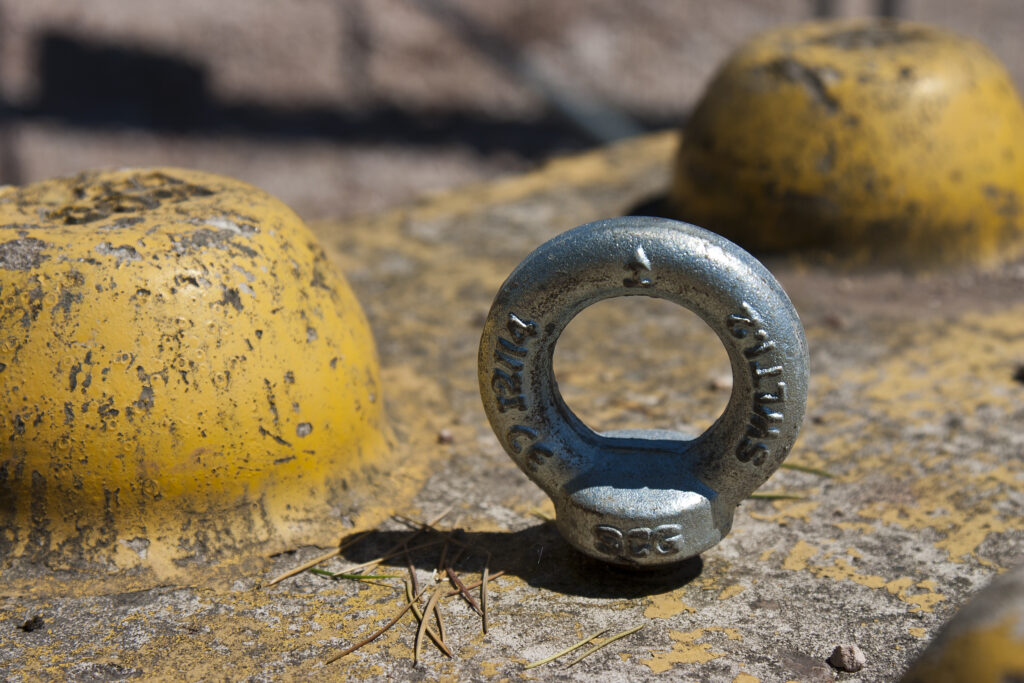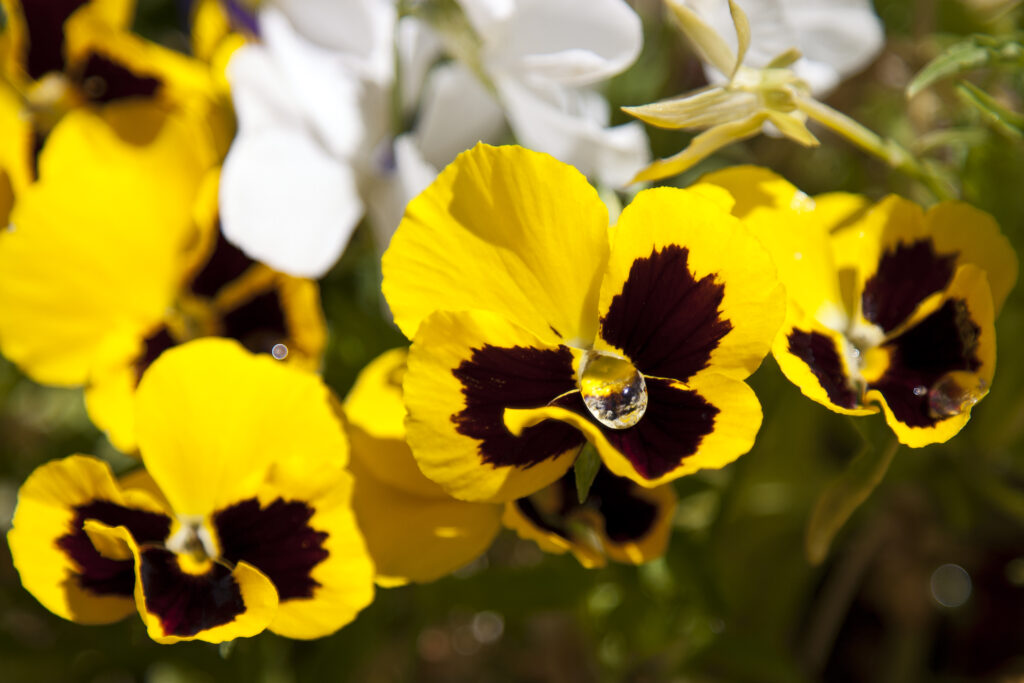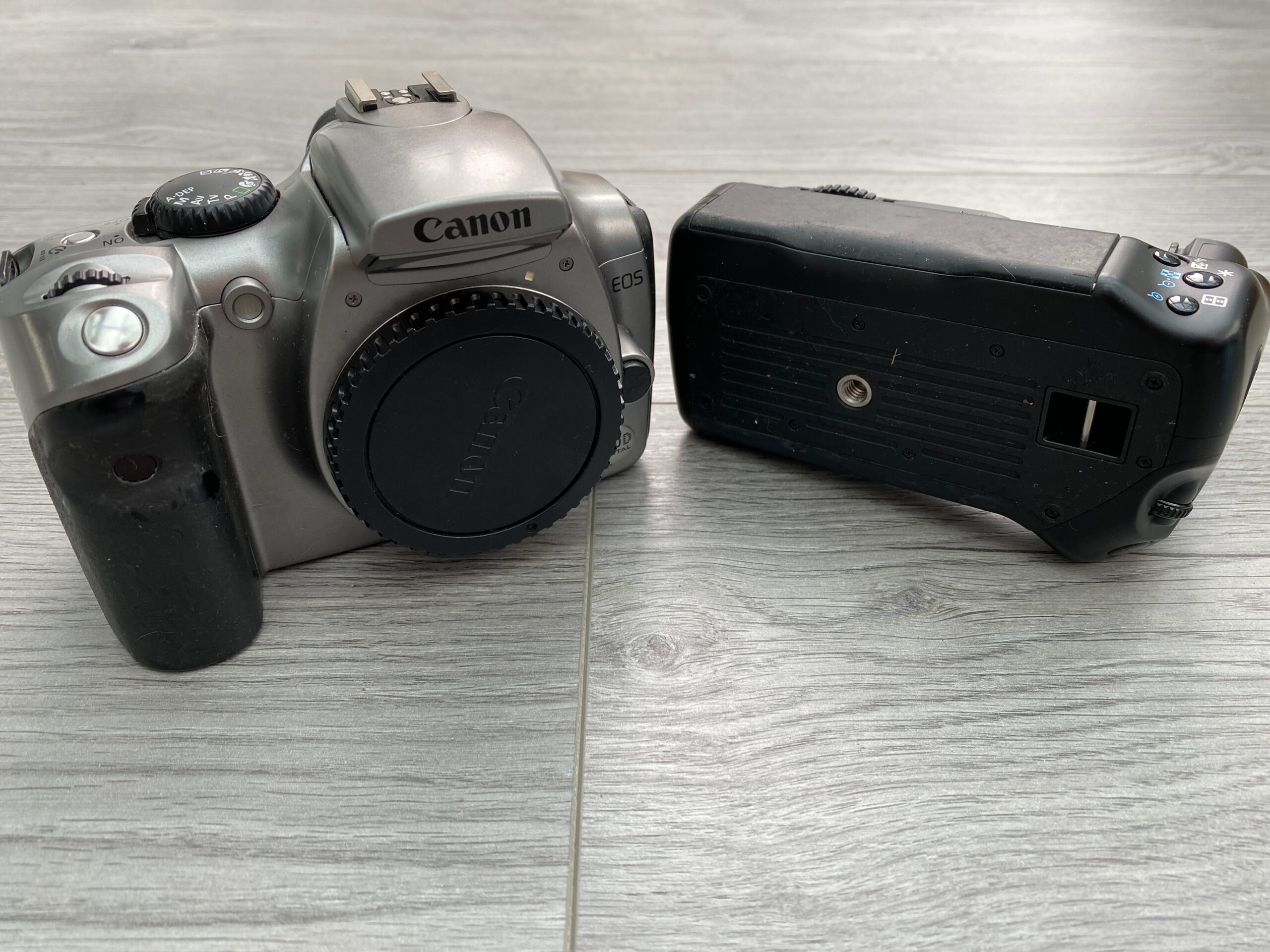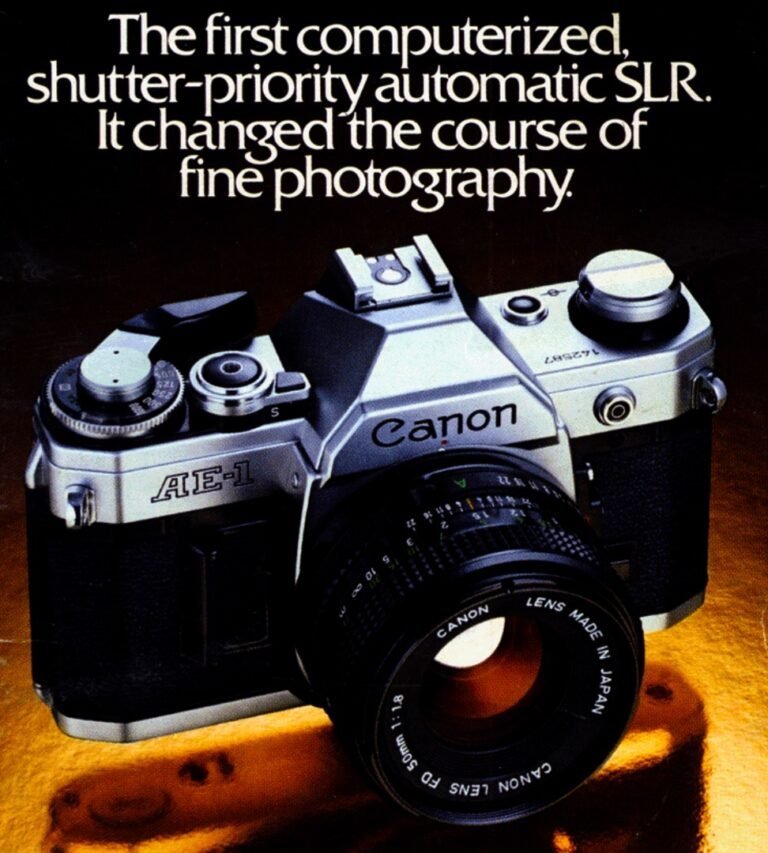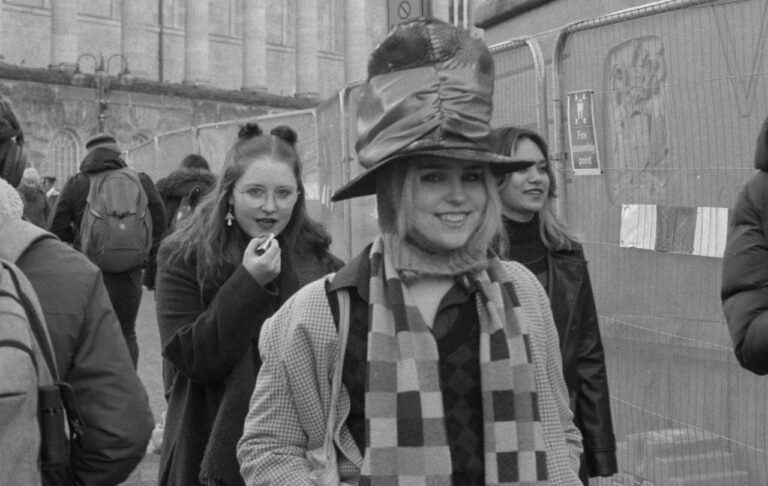Last time, I’d spent a week and more money than I’d liked to have by bolting two different camera bodies together to make one working one. Ultimately the body I tried to fix ended up being a total loss due to focusing issues and a mouldy sensor. The whole point in these camera purchases is to highlight the range of gear it’s possible to pick up for a small initial outlay, so obviously you’d have better luck if you were willing to spend more for a higher quality/tested copy. Repair is part of the fun as far as I’m concerned. Regardless of the delays, I could now set out on the original objective of testing out the first DSLR aimed at the mass consumer market.
Right now, you can pick up a range of capable DSLR bodies for approximately the same price if you look around local selling sites and ebay. Previously, we’ve gone through the 10D, 20D and now the 300D all for £15-25 each. I’ve had varying luck with accessories and memory cards which arrive with each body, but with patience, you can sometimes get everything you need, even a bag to carry it all in, for less than a round of beers. There is so much choice if you’re willing to forget age and just concentrate on having fun taking pictures and learning new things.
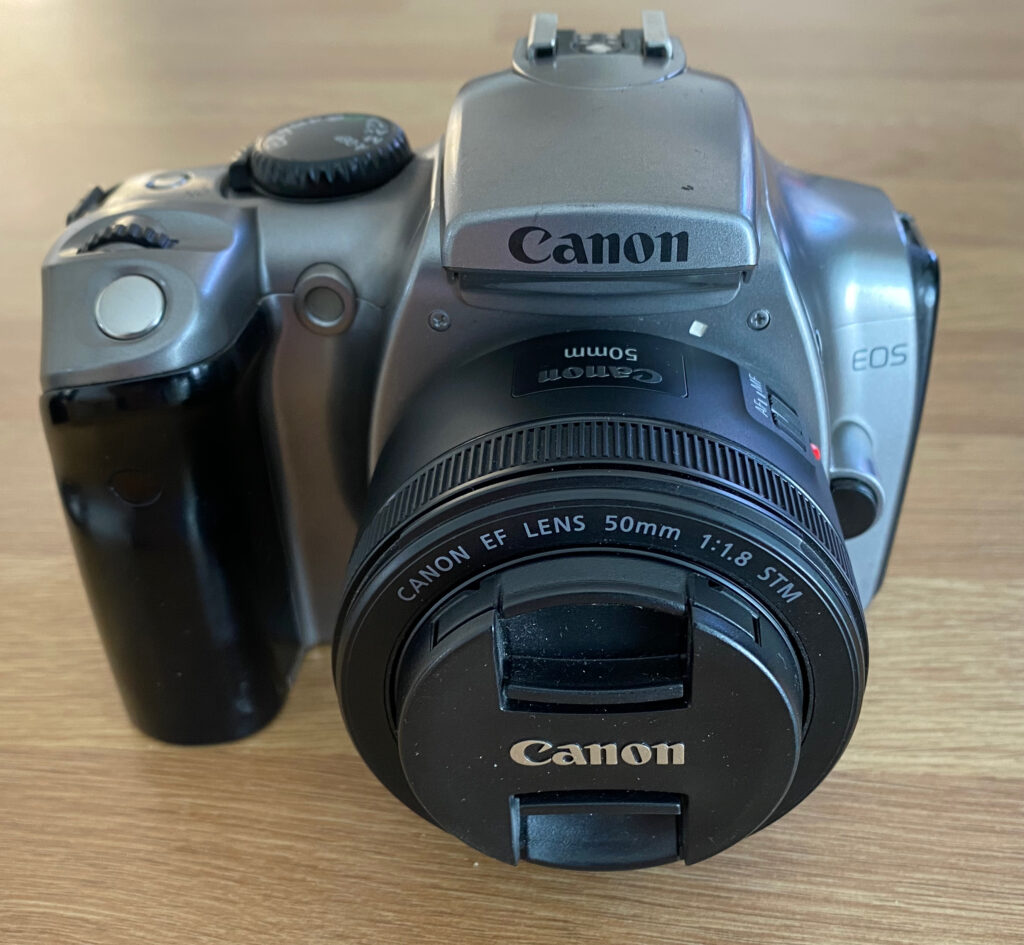
Considering this wealth of choice available to photographers on a budget, or simply people who like fixing up and using old kit, is the 300D worth pursuing when there are “prosumer” models available for the same or very similar money?
Ergonomics
My 300D came with a battery grip. Depending on the body you’re using, a grip can make a huge difference to how easy the camera is to hold and use. I remember the grip for the 350D being absolutely transformative, it suddenly made the camera more balanced, it had a better grip and gave the obvious bonus of portrait controls and longer battery life.
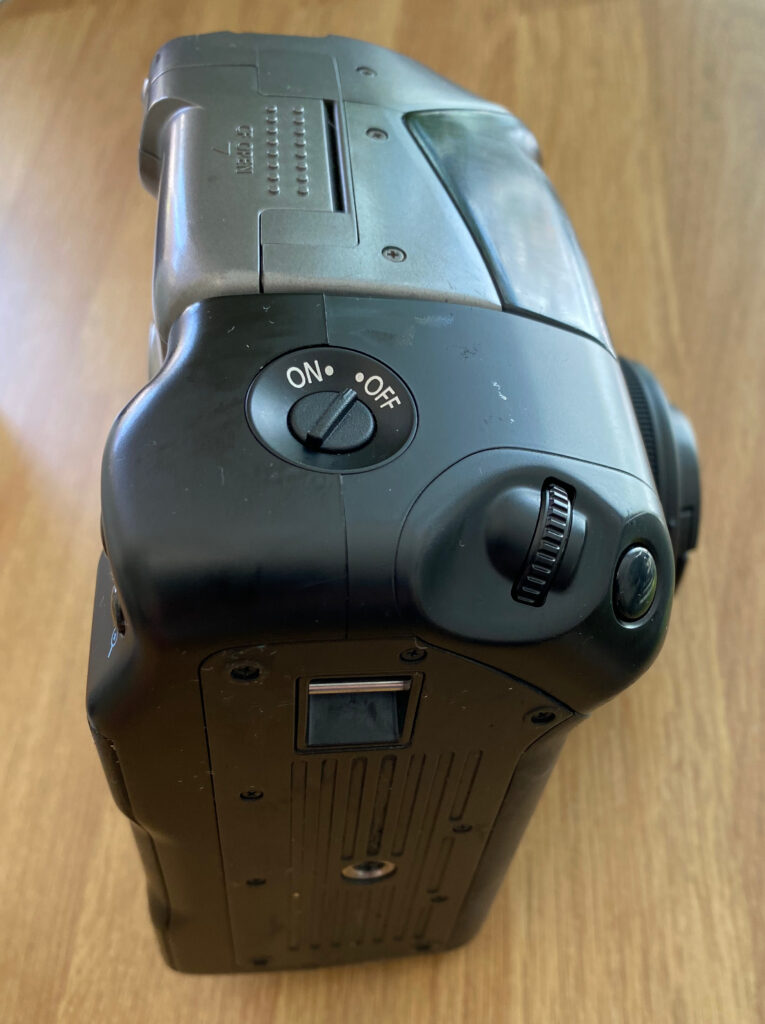
I may not have the biggest hands in the world, but I’m fairly sure you could describe them as average. This grip makes me feel like a Borrower and is apparently made for people who are walking around with baseball gloves for hands. It is so wide that you can’t fully wrap your fingers around it and the controls don’t feel like they’re in the right place for your fingers to naturally land on them. After just a few minutes of use the grip really does become too cumbersome and uncomfortable to use. The 10D grip is much, much nicer in the hand, despite that body being slightly bigger than the 300D. The grip soon came off and it now resides on a shelf, never to be used again.
The body of the 300D surprised me. My first DSLR was the 350D, which is a tiny machine in comparison. I expected this to be the same and it isn’t. Canon film bodies from the bottom to top of the range used to have really nice grips that fit comfortably for prolonged holding and use. Both the super cheap 1000FN and EOS 55 fit my hands perfectly and have reassuringly solid grips.
I’d describe the 300D as a baby 10/20/30D. The grip is certainly big enough to be useful and relatively comfortable but it lacks the little subtle ergonomic tweaks the more expensive bodies had that add to their comfort in use. The weight and balance of the body is fine, but the feel is super plastic. It doesn’t feel flimsy or as if it will break, the fact the one I have is 19 years old is testament to the fact plastic doesn’t mean fragile. However, if you love film bodies or have experienced the more upmarket Canon DSLR bodies, you’ll miss their design and solid feel.
Being completely objective, there is absolutely nothing in the design and ergonomics of the 300D that would make it a poor or unusable choice – it’s perfectly functional.
Features and controls
It’s no secret that Canon based the 300D on the 10D. It has the exact same sensor and image processor and therefore should be capable of doing everything the 10D can, but they are not the same in use.
All of Canon’s early DSLR’s carried over features from their film cameras. Notably the wheel on the back of the body, the selector dial by the shutter button and in the case of the 300D, the liquid crystal information display on the back. On a film body, you can get away with not having the control wheel on the back without really missing it that much. On a digital camera, it’s different. That wheel is so useful and intuitive to use that when you don’t have one it’s a real bugbear that I can’t get over.

However, prepare yourself for a massive contradiction, the lack of wheel on the 300D actually makes the review of images easier in terms of zooming and panning. On the 10D they really didn’t think this through and that’s obvious with the introduction of the little joystick on the 20D and subsequent models. Even so, I still prefer the 10D over this for my style of shooting because image review just doesn’t matter to me.
For all other controls it’s the same as every Canon camera they’ve ever made – if you’ve used one, you can pick another one up and just get on with it in an instant. The controls for focus point, changing ISO and so forth all came back to me quickly from the 350D and felt natural in a minute or two. I’d expected the lack of display on top of the camera to really annoy me, but in use I didn’t really notice or miss it that much, although out of habit there were a few times when I looked for something that wasn’t there.
In terms of features, there are two things I really miss compared to the 10D – metering mode control and focus mode control. On the 300D, the focus is fixed in AI focus mode and cannot be changed by the user, which drives me mad, I use focus and recompose all the time and if you do it on the 300D and pan left or right it’ll then change the focus for you. Want to change to spot metering? No chance.
These are all features on the 10D, and as this is basically a 10D in a smaller body we can presume that Canon just switched those features off for some differentiation between models. If we did presume such a thing, we’d be absolutely spot on.
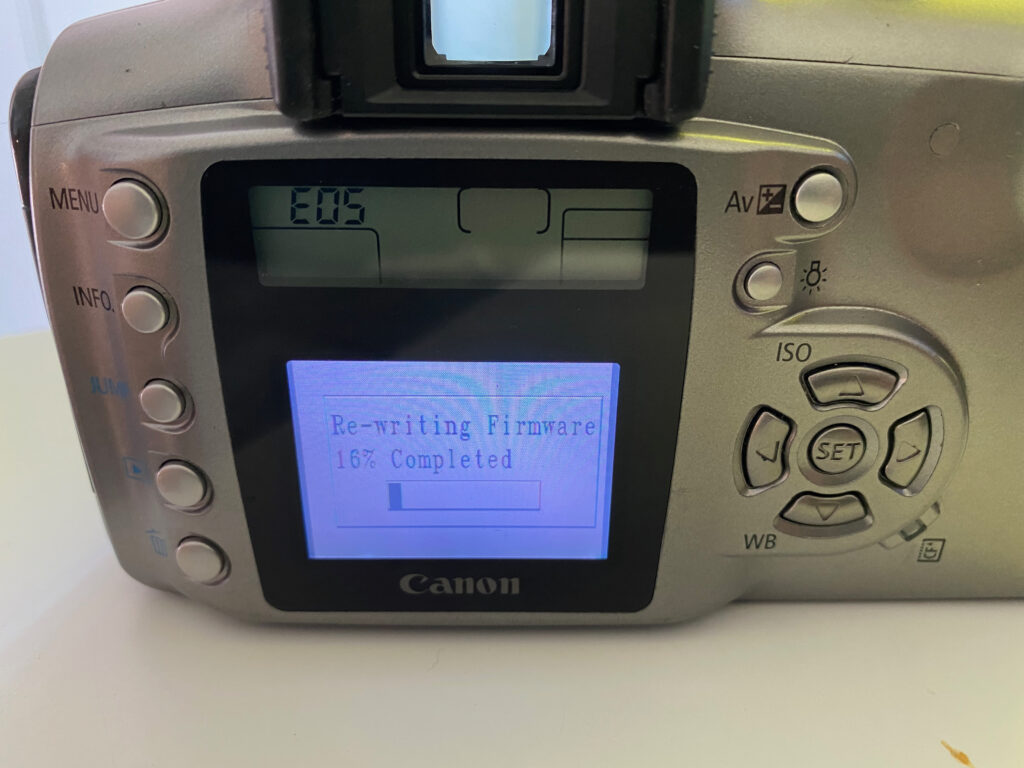
As it happens, many people noticed this and some friendly folks reverse engineered the firmware for the camera and found a way of turning some of the missing features back on. Flashing the firmware is as easy as putting it on the card, turning the camera on and waiting. There is some confusion as to what features it brings back as some of those listed on the firmware website are definitely already part of the stock firmware. What it absolutely does do, is give you back focus mode control and the ability to bump the iso to 3200.
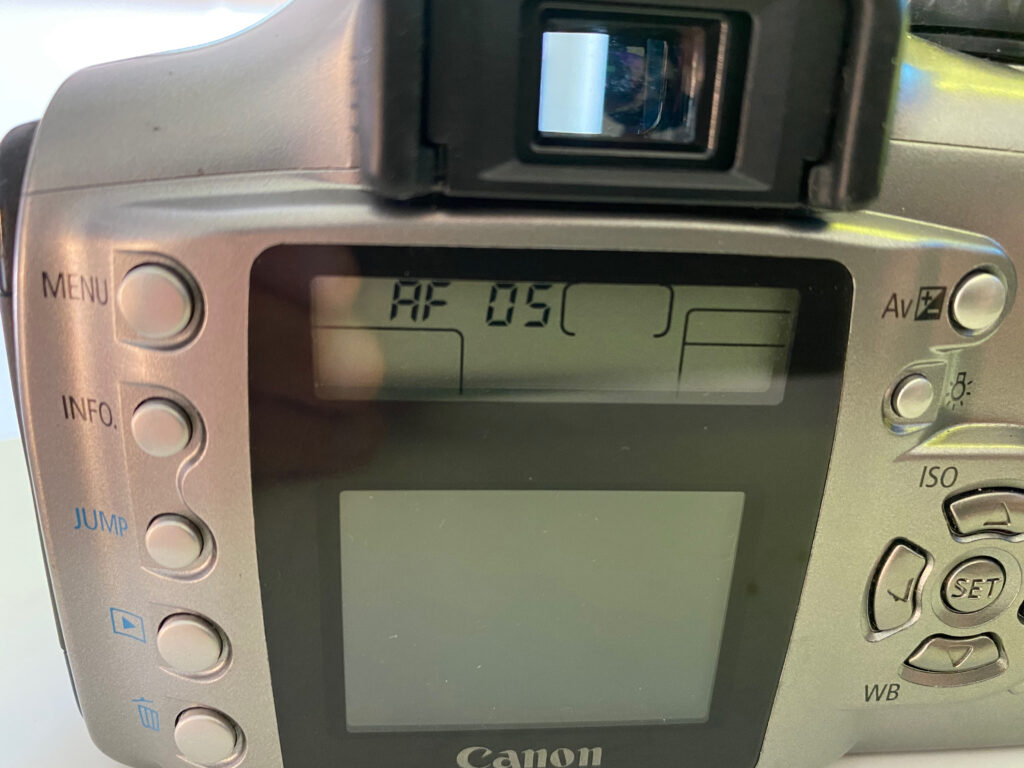
With these features now back in place, for me there’s not really anything other than metering modes I’d feel like I really needed. I stuck the focus point to always be in the centre, focus to one shot, single shot mode and as always, RAW image quality. That’ll do me.
Performance
Considering the similarity on a component level with the 10D, it was surprising to find that the 300D felt slightly faster in writing images to the CF card, being ready for the next frame and flushing the buffer. When I timed it side by side, however, the 10D was actually quicker but the difference was fairly negligible – they’re both slow cameras to write data. The big difference is in the ability for the 300D to respond after taking each shot, the 300D does not have a large buffer and you don’t need to be using the continuous drive mode to actually fill it just firing off single shots. This is by no means a high performance camera, but it’s absolutely fine for photo walks and projects.
In use, it was really apparent that the 300D takes a long time to wake up from sleep or a cold power on. After a while this can become quite annoying especially if you’re taking a few shots, walking a little and then picking the camera up. These intervals are long enough for it to turn off again and sometimes you can find yourself just holding the camera to your eye, waiting for it to wake up. What surprised me was that the 300D side by side with the 10D is quite obviously slower to turn on. I cannot think of an obvious reason for this when they’re based on the same hardware. I didn’t mind the slow pace of the 10D too much, but it seemed a step too far with the 300D.
The shutter sound is more damped and subdued compared to more substantial cameras, which is fine. Anything but the high pitched sneeze of the 350D will do me. The shutter button feels fairly average and focus performance is slow, but reasonably reliable. I’m reticent to comment further on the focus performance as I’m using a camera which has had the sensor pulled off and zero recalibration done afterwards. It’d be unfair to start moaning about AF when I was lucky to bodge one camera together that could even be bothered to focus at all.
Image Quality

Lets be clear from the start – this is yet another cheap DSLR which produces really good images. If you like to zoom in to your pictures to 100% and stare at details with a magnifying glass then I’m sure you’ll find fault with dynamic range, chromatic aberrations, vignetting and god knows what else. However, if you’re looking at the images that come out of the 300D as a whole, its difficult to pick fault with them at all.
My 300D has been in the wars, as the image above shows I didn’t manage to get the sensor completely clean despite it looking absolutely spotless under a light when I put it back in the body. It wouldn’t be fair to be too critical of the image quality when I’ve been bodging around with the most important piece of the camera. Having said that, I did notice that images out of the 300D required slightly more sharpening than the 10D to look spot on and this was consistent across all pictures I’ve taken with it.

It’s a real sense of Déjà vu with the 300D. As I said previously about the 10D, if this was the only DSLR I owned, I wouldn’t be upset about the image quality and nor would I feel the need to upgrade based on that single factor alone. Using a decent lens on these bodies is far more important than spending your money on a more expensive model. If all you had was the horrible EF-S 18-55 kit lens, then yes you’d probably be a little let down by the final image, but no one in their right mind would use that.
Budget bargain or not?
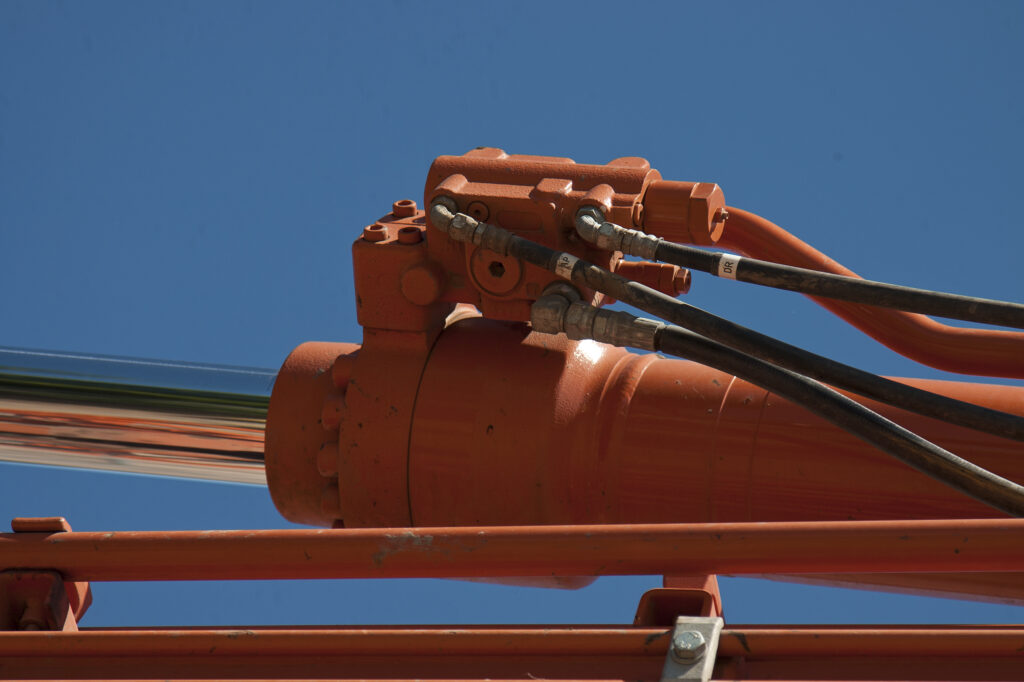
I’ll freely admit that I bought the 300D expecting to hate it. I thought it would have terrible handling, annoying controls and uninspiring image quality. I think my judgement was clouded by experiences of its successor the 350D. Canon made a decent effort with the 300D and the body is quite nice to use because they avoided the urge to make the body as small and slim as possible. The grip and body as a whole are shiny plastic all over and it doesn’t feel great but it’s not awful either and more than acceptable for what is effectively a disposable DSLR.
As usual, I have nothing much to say about the screen other than you cannot use it to check focus. Personally, I only used it for accessing the menus and nothing else, so the quality of the display didn’t make a single difference.
I really don’t like the 4 way arrow controller in place of the wheel and this is one of the biggest annoyances on the 300D. I can see why Canon did it and there’s got to be some notable differences or cost savings between models, but the buttons just frustrate when you’re used to their wheel controller. Again, this isn’t a life changing problem, but it’s an inconvenience.
I enjoyed using the 300D far, far more than I thought I would. It is not a body that I think I’m going to make a great deal of use of in the future, though. If your ambition, like mine, is to find the absolute cheapest DSLR kit you can get to enjoy using, then you’re reasonably spoiled for choice. Because of this, I couldn’t really advocate the purchase of this over the 10 or even 20D. With some patience and luck you will absolutely be able to pick either of these up for exactly the same money and that makes the decision for you – both are faster, ergonomically better, with more comfortable grips and more solid in use.
If, by some chance, you can pick a 300D up for even sillier money, say £5-10 then… why not. I’m still in awe of these old, cheap cameras and when it comes to what actually matters – the final image, ultimately the 300D still didn’t disappoint. It has earned a place on the shelf of cameras.
Sample Images



